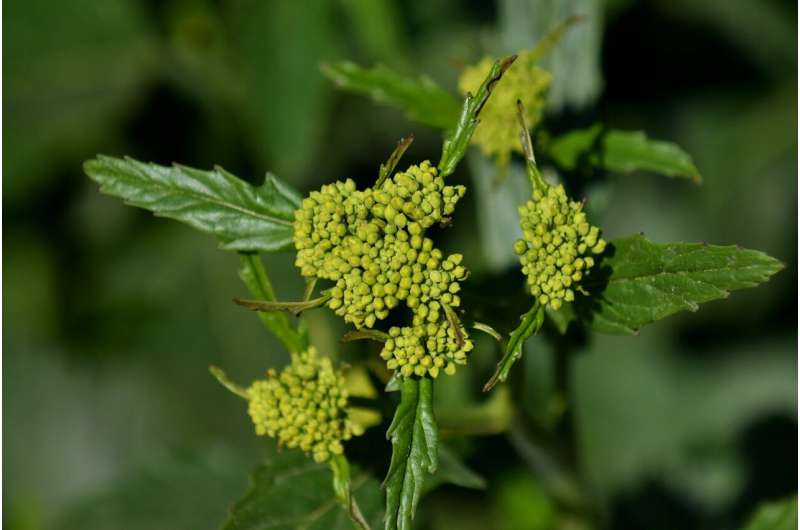This article has been reviewed according to Science X's editorial process and policies. Editors have highlighted the following attributes while ensuring the content's credibility:
fact-checked
peer-reviewed publication
trusted source
proofread
Polyploidy and long-distance dispersal jointly shape global species diversification in yellowcress, finds study

Long-distance dispersal (LDD) is one of the most important biogeographical processes. Polyploidy, or whole-genome duplication, has long been proposed as an intrinsic feature of LDD. However, it is still unclear how and to what extent polyploidy interacts with LDD in a focal group.
In a study published in Global Ecology and Biogeography, researchers from the Xishuangbanna Tropical Botanical Garden (XTBG) of the Chinese Academy of Sciences uncovered the synergistic relationship between polyploidy and LDD and provided insights into their joint roles in shaping the global species diversification in a plant genus, Rorippa, that originated in the late Miocene (about 7.10 million years ago).
The researchers developed a unified framework to test the putative role of polyploidy in the global biogeography of yellowcress (Rorippa Scop.), a Brassicaceae genus.
Using nucleotide data from both plastid genomes and several low-copy nuclear loci, the researchers first constructed well-resolved and dated phylogenies for 58 Rorippa species. They then classified different genome groups across ploidies and traced their dispersal tempos and modes around the world.
They found that LDD shaped the amphitropical disjunction of Rorippa, with polyploids exhibiting higher dispersal rates than those of diploids. Five diploids and 21 polyploids were identified as products of transoceanic speciation events. Polyploidy-involving LDD were more common in terms of polyploidization following LDD than those preceding LDD.
The plastid biogeography of Rorippa suggests that frequent LDD may have shaped the amphitropical disjunction of its species, and that polyploidy played a significant role during LDD. The overall global biogeography of Rorippa indicated that polyploidy may have mediated the success of LDD in the Southern Hemisphere.
The study demonstrates that polyploidy is not only a driver but also a responder of LDD in Rorippa, highlighting a synergistic relationship between them. It provides a framework to uncover the biogeographical consequences of polyploidization and the joint roles of polyploidy and LDD in shaping the distribution of biodiversity.
"The results not only help us understand how plant species adapt and spread to new geographic areas, but also provide new ideas for protecting and managing the important plant resource of Rorippa," said Xing Yaowu of XTBG.
More information: Ting‐Shen Han et al, Synergistic polyploidization and long‐distance dispersal enable the global diversification of yellowcress herbs, Global Ecology and Biogeography (2023). DOI: 10.1111/geb.13798
Journal information: Global Ecology and Biogeography
Provided by Chinese Academy of Sciences
















